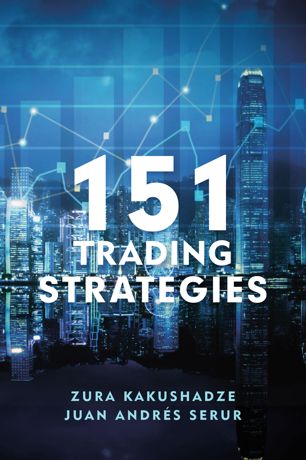A trading strategy can be defined as a set of instructions to achieve certain asset holdings by some predefined times t1, t2, . . . , which holdings can (but need not) be null at one or more of these times. In many cases, the main objective of a trading strategy is to make a profit, i.e., to generate a positive return on its investment. However, some viable trading strategies are not always outright profitable as stand-alone strategies. E.g., a hedging strategy can be a part of a bigger plan, which itself can but need not be a trading strategy. Thus, an airline hedging against rising fuel costs with commodity futures is a trading strategy, which is a risk management step in executing the airline’s business strategy of generating profits through its services. In the case of trading strategies that are intended to be outright profitable as stand-alone strategies, one may argue that the phrase “buy low, sell high” captures their essence. However, this viewpoint is somewhat superfluous and, while it applies to trading strategies that buy and sell a single asset (e.g., a single stock), it would exclude a whole host of viable strategies that do not work quite like that. E.g., a trading strategy that uses a hedging sub-strategy for risk management may not always “buy low, sell high” when it comes to a particular asset in its portfolio. This is because hedging risk—or, essentially, transferring some risk to other market participants—is not free, and often a trader will pay a premium for hedging some risks in a trading strategy to achieve its objectives. Another example would be the so-called statistical arbitrage, wherein the trading portfolio can consist of, e.g., thousands of stocks and profitability is typically not achieved by buying low and selling high each stock or even any discernable groups of stocks, but statistically, across all stocks, with some trades making money and some losing it. It gets complicated quickly.
چکیده فارسی
یک استراتژی معاملاتی را میتوان به عنوان مجموعهای از دستورالعملها برای دستیابی به داراییهای معین در زمانهای از پیش تعریف شده t1، t2، تعریف کرد. . . ، که دارایی ها می توانند (اما لازم نیست) در یک یا چند بار از این زمان ها باطل شوند. در بسیاری از موارد، هدف اصلی یک استراتژی معاملاتی، کسب سود است، یعنی ایجاد بازده مثبت در سرمایه گذاری خود. با این حال، برخی از استراتژی های تجاری قابل دوام همیشه به عنوان استراتژی های مستقل سودآور نیستند. به عنوان مثال، یک استراتژی پوشش ریسک میتواند بخشی از یک برنامه بزرگتر باشد، که خود میتواند اما لازم نیست یک استراتژی معاملاتی باشد. بنابراین، پوشش ریسک یک خط هوایی در برابر افزایش هزینه های سوخت با قراردادهای آتی کالا، یک استراتژی تجاری است که یک گام مدیریت ریسک در اجرای استراتژی تجاری شرکت هواپیمایی برای ایجاد سود از طریق خدمات آن است. در مورد استراتژیهای معاملاتی که در نظر گرفته شدهاند به عنوان استراتژیهای مستقل کاملاً سودآور باشند، ممکن است استدلال شود که عبارت «کم بخر، بالا بفروش» ماهیت آنها را نشان میدهد. با این حال، این دیدگاه تا حدودی زائد است و در حالی که برای استراتژیهای معاملاتی که یک دارایی را میخرند و میفروشند (مثلاً یک سهام) اعمال میشود، مجموعهای از استراتژیهای قابل دوام را که کاملاً به این شکل کار نمیکنند، حذف میکند. به عنوان مثال، یک استراتژی معاملاتی که از یک استراتژی فرعی پوشش ریسک برای مدیریت ریسک استفاده می کند، ممکن است همیشه در مورد یک دارایی خاص در پرتفوی آن، «کم بخر، بالا بفروشد» استفاده نمی کند. این به این دلیل است که ریسک پوشش ریسک - یا اساساً انتقال برخی از ریسک ها به سایر فعالان بازار - رایگان نیست و اغلب یک معامله گر برای پوشش ریسک در استراتژی معاملاتی برای دستیابی به اهداف خود، حق بیمه پرداخت می کند. مثال دیگر آربیتراژ آماری نامیده می شود، که در آن سبد معاملاتی می تواند شامل هزاران سهام باشد و سودآوری معمولاً با خرید پایین و فروش بالا هر سهم یا حتی هر گروه قابل تشخیصی از سهام حاصل نمی شود، اما از نظر آماری، در سراسر سهام به دست نمی آید. همه سهام، با برخی معاملات پول درآورده و برخی آن را از دست می دهند. به سرعت پیچیده می شود.
ادامه ...
بستن ...
Author(s): Zura Kakushadze, Juan Andrés Serur
Publisher: Springer International Publishing,Palgrave Macmillan, Year: 2018
ISBN: 978-3-030-02791-9,978-3-030-02792-6
ادامه ...
بستن ...










